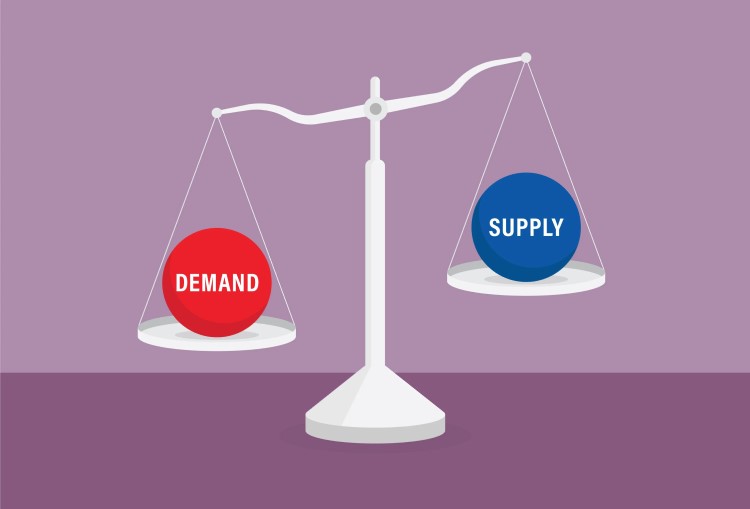Supply and demand are foundational concepts that drive the economic markets. They influence everything from the price of groceries to the rates of employment. These forces allocate resources in a market economy. Having an understanding of them is crucial for anyone participating in economic activities. “Supply” refers to how much of a product or service is available. “Demand” indicates the desire and ability of consumers to purchase these offerings. Together, these elements are the building blocks that help explain the behaviors observed in economic markets.
This relationship forms the core mechanism behind price determination and resource allocation in capitalist systems. By understanding how supply and demand interact, both consumers and producers can make more informed decisions that align with their interests and economic goals.
The Fundamental Law of Supply and Demand
The law of supply and demand is elegantly simple but has profound implications for the economy. The principle asserts that if demand increases while supply remains unchanged, a shortage will occur, leading to higher prices. Conversely, if demand decreases and supply does not change, a surplus results, and prices tend to fall. The same rules apply inversely for changes in supply with constant demand.
These dynamics distribute resources efficiently within the market. High demand for a product without sufficient supply leads to increased prices. This signals producers to increase production or new players to enter the market, restoring balance. On the other hand, an oversupply, unless matched with equal demand, lowers prices, signaling producers to reduce output.
This interplay not only ensures that goods and services go to those who value them most but also promotes an efficient and responsive market system that adjusts to changes in consumer preferences and technological advances.
External Influences on Supply and Demand
Numerous external factors can influence supply and demand, shifting the curves and leading to new market equilibriums. On the demand side, these factors include consumer preferences, population growth, income changes, and prices of related goods (substitutes and complements). For example, a rise in consumer income typically increases demand for goods and services as purchasing power strengthens.
Supply can be affected by changes in production technology, input costs (like raw materials and labor), and external events such as natural disasters or political instability. Technological improvements can lead to an increase in supply by making production more efficient, thus lowering costs and allowing more goods to be produced at the same price.
Furthermore, government interventions through policies like taxes, subsidies, and regulations can significantly impact industry trends. These interventions can alter the cost of goods and services or directly limit or encourage the production of certain goods.
Real-World Applications
In the business world, understanding supply and demand is critical for strategic decision-making. Companies use knowledge of these principles to set prices, plan production levels, and enter new markets. Anticipating shifts in industry conditions can help businesses stay competitive and responsive to market conditions.
For policymakers, industry analysis is essential for crafting effective economic policies. They may manipulate either supply or demand to achieve desired economic outcomes, such as controlling inflation, managing unemployment, or stimulating economic growth. For instance, during a recession, a government might increase public spending to boost demand and invigorate the economy.
Real-world examples include the housing market, where interest rates can significantly influence demand. Lower interest rates reduce the cost of borrowing, increasing demand for real estate and pushing prices up if supply doesn’t keep pace.
The Impact of Globalization on Supply and Demand
Globalization has expanded the scope and complexity of business dynamics by linking global markets more closely. This integration means that supply and demand are increasingly influenced by international factors, making the economic environment more interconnected and dynamic.
For example, an increase in demand for smartphones in one country can affect production in several other countries involved in different stages of the manufacturing process. Similarly, a disruption in oil supply in one region can lead to price increases worldwide, affecting various sectors differently.
These principles form the bedrock upon which market economies operate, affecting decisions at individual, corporate, and government levels. They provide a framework for understanding how prices are set and resources are distributed, emphasizing the importance of economic efficiency and responsiveness.
By mastering these dynamics, businesses can better navigate the complexities of the economic landscape, ensuring more informed and effective decision-making. Whether it’s a consumer deciding on a purchase, a business planning its production, or a government implementing economic policy, these principles play a critical role in shaping economic outcomes in a continually evolving market.


